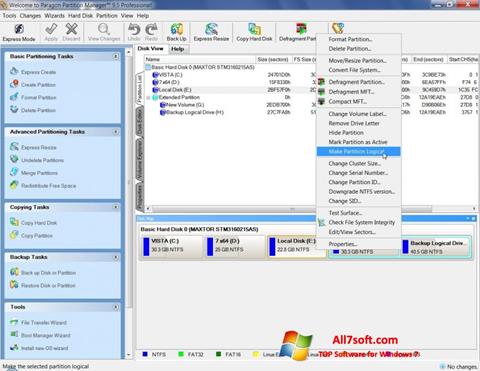
It's best to just leave them alone to do their jobs starting your PC and helping you recover from problems.

The volmgrx service is using the volmgrx.sys file that is located in the WinDirSystem32drivers folder. Close the command window and restart the computer. Copy the commands below, paste them into the command window and press ENTER: sc config volmgrx start boot sc start volmgrx 3.
#Volume manager windows 7 full#
These partitions are generally pretty full with really important files your PC needs to operate properly. Run the Command Prompt as an administrator.

Provides high availability storage solutions through. This overcomes the physical limit of the disk. Allows creation of logical volumes spanning over multiple disks. The main features of volume manager are following.

Here are some common tasks you might want to do but that use other tools in Windows:
#Volume manager windows 7 how to#
If you have feedback on how to improve these topics, we'd love to hear from you! Just answer the Is this page helpful? prompt, and leave any comments there or in the public comments thread at the bottom of this topic. If that doesn't help - don't panic! There's a ton of info on the Microsoft community site - try searching the Files, folders, and storage section, and if you still need help, post a question there and Microsoft or other members of the community will try to help. To run this tool, we should: Press ' Win + R ', input ' diskmgmt.msc ' and hit ' Enter ' OR: right click ' Computer ' icon > choose ' Management. If you get an error or something doesn't work when following these procedures, take a peek at the Troubleshooting Disk Management topic. As is well known, the system built-in Disk Management of Windows 7 released by Microsoft has been greatly improved and added more functions like Extend Volume to make it possible to resize partition.


 0 kommentar(er)
0 kommentar(er)
